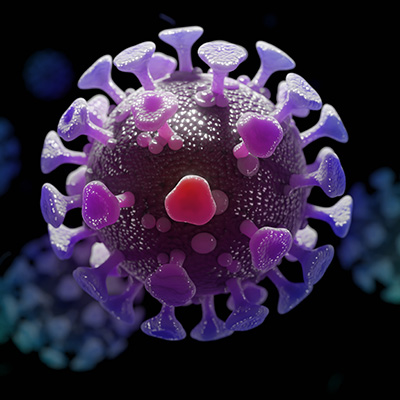September 30, 2020 -- What if you could stop the SARS-CoV-2 virus from reproducing itself? Researchers from Florida hope to do just that by creating a compound that targets and binds to RNA regions on the SARS-CoV-2 genome and disrupts its replication. The research was described in a September 30 article published in ACS Central Science.
The SARS-CoV-2 genome has been extensively interrogated, including RNA coding and noncoding regions. Structural elements within these regions could provide novel targets for small molecule interventions. In particular, researchers from Scripps Research in Jupiter, FL, were interested in structural sites within what are called ribosomal frameshifting elements.
Frameshifting is a biological process that directs the synthesis of proteins and prepares infected cells for viral propagation. The SARS-CoV-2 frameshift element contains a hairpin and other structures that help the virus translate its genes into proteins, namely protein phosphatase I (pp1a; pp1ab). The frameshift element contains an attenuator hairpin, slippery site, and a three-stemmed pseudoknot that work together to pause normal ribosomal activity and initiate frameshifting to alter the proteins being coded.
The Scripps researchers suspected that destabilizing the frameshift element would be an effective way to inhibit SARS-CoV-2 frameshifting and subsequent propagation of the virus.
Finding RNA-targeted molecules
Previous computational analysis showed that the frameshift element hairpin has a bulge in its internal loop that appears to be conserved and may act as a small molecule binding site. To study the binding capacity of different molecules, the team investigated a library of 3,271 RNA-focused ligands using microarrays.
They identified 26 binders that were subsequently examined by competitive screening, which revealed five hits -- compounds 1 to 5 -- that were selected for in vitro investigation. In experiments with Renilla luciferase reporter transfected HEK293T cell cultures, only compound 5 (C5) significantly decreased frameshifting ability by 25%, in a dose-dependent manner and without binding to unintended RNA. This is attributed to C5 reducing the stability of the attenuator hairpin structure.
The researchers validated the ability of the small molecule to bind its target with a method called chemical cross-linking and isolation by pull-down (Chem-CLIP), which was added to C5 to create the derivative, C5-Chem-CLIP. When the compound was tested with other highly expressed messenger RNAs (mRNAs), they did not bind with C5-Chem-CLIP, indicating that the molecule is selective.
Lead optimization of the candidate
Taking it a step further, the Scripps scientists wanted to enhance the potency of the C5 molecule by recruiting endogenous nucleases to cleave the target by attaching a ribonuclease targeting chimera (RIBOTAC) to create a compound that could target SARS-CoV-2.
"These compounds are designed to basically remove the virus," said Matthew Disney, PhD, research chemist at Scripps, in a statement.
In contrast to simple binding of C5 and destabilization of the hairpin, C5-RIBOTAC's mode of action involved cleavage and degradation of SARS-CoV-2 RNA. It was estimated that RIBOTAC increased the potency of the compound by at least 10-fold compared to the original C5 molecule.
Disney emphasized that this research is only the first step in the long process of refinement that lies ahead. Even so, the results demonstrate the feasibility of RNA-targeted small-molecule drugs in the future.
"This is a proof-of-concept study, we put the frameshifting element into cells and showed that our compound binds the element and degrades it," Disney said. "The next step will be to do this with the whole COVID virus, and then optimize the compound."
"By coupling our predictive modeling approaches to the tools and technologies developed in the Disney lab, we can rapidly discover druggable elements in RNA," said collaborator Walter Moss, PhD, from Iowa State University. "We're using these tools not only to accelerate progress toward treatments for COVID-19, but a host of other diseases, as well."
Do you have a unique perspective on your research related to virology or drug discovery? Contact the editor today to learn more.
Copyright © 2020 scienceboard.net







